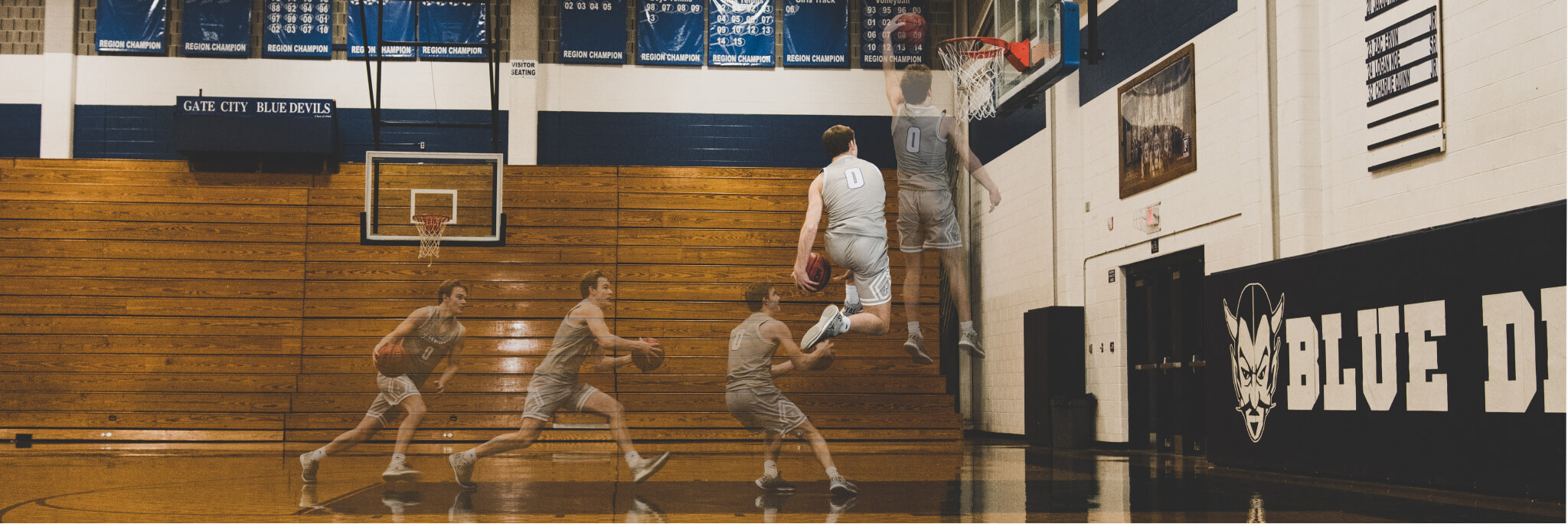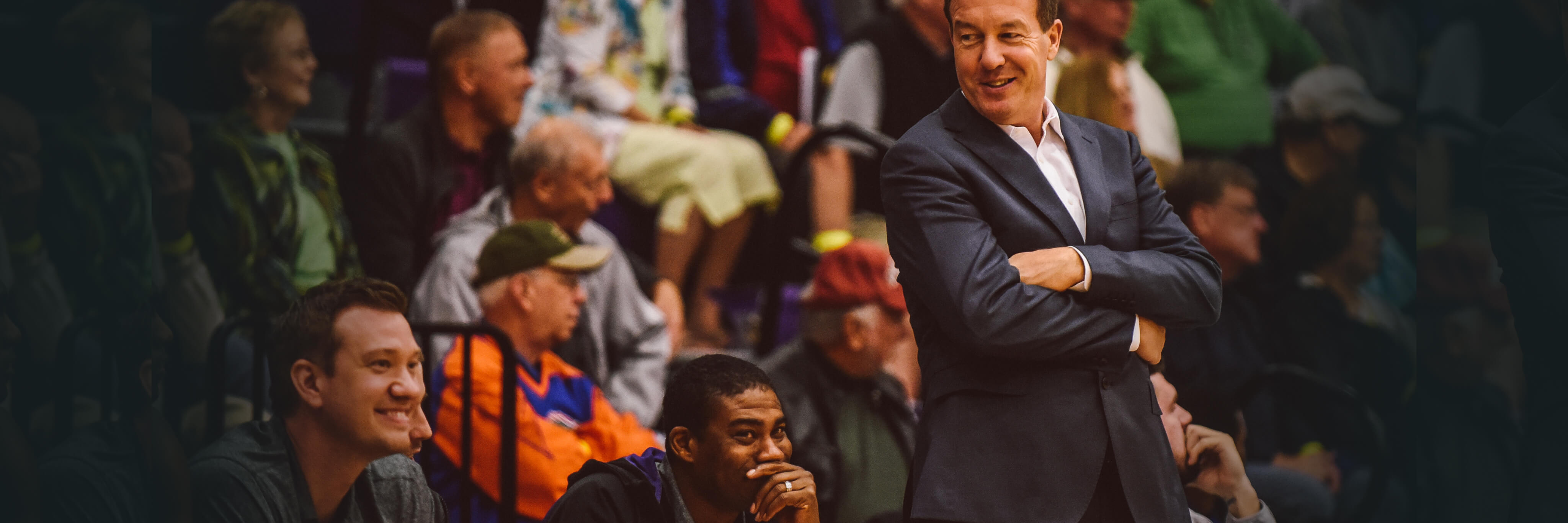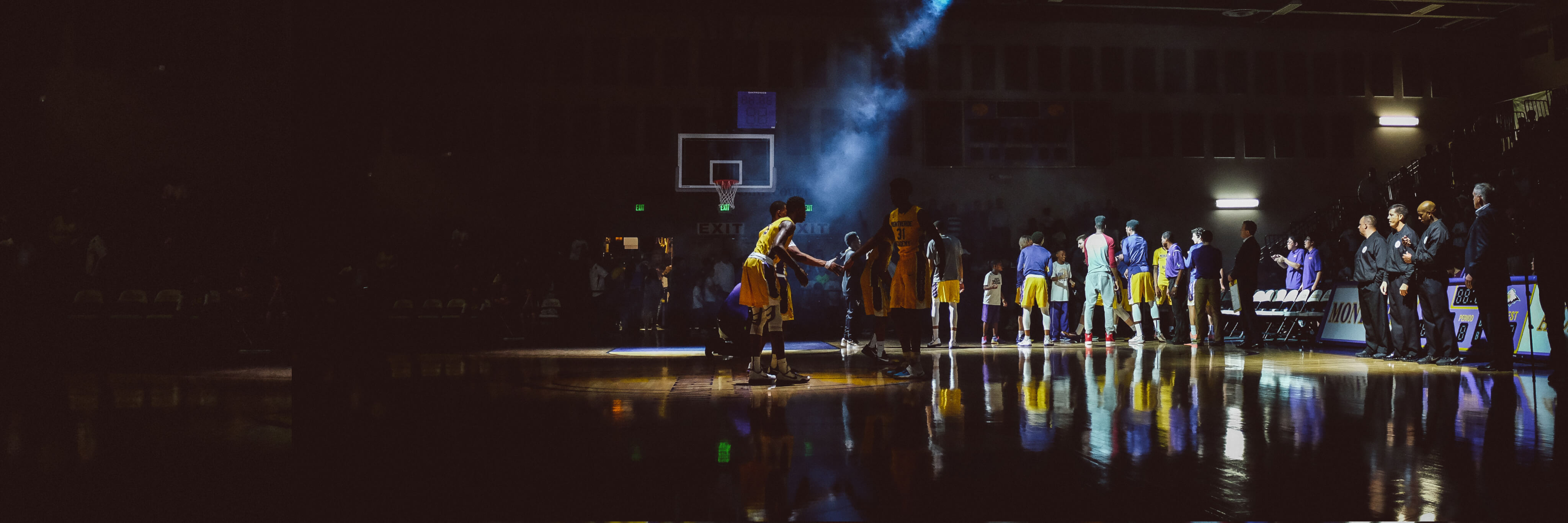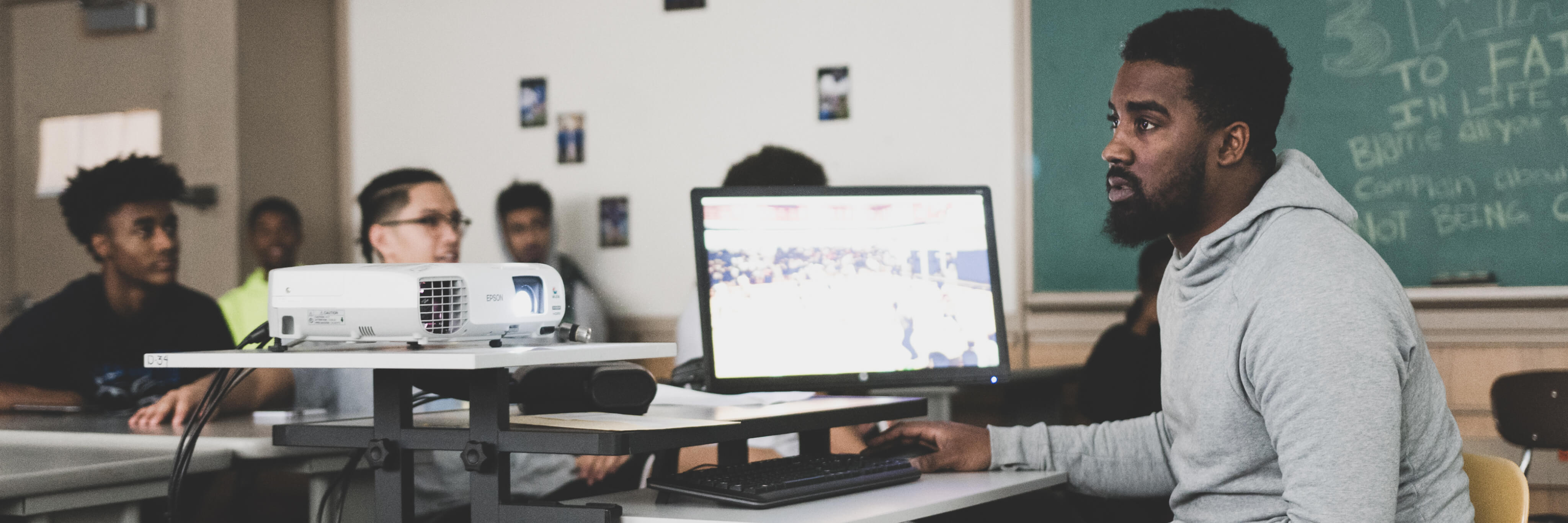Standing Out in Today's Recruiting Landscape


Live scouting happens less and less these days, given new NCAA rules and an influx of recruiting technology. Recruiters want to “live scout” across the country, and shareable video makes that possible. The new recruitment model is built around video—and your players know it.
When athletes were asked in a recent survey to rate the importance of video for recruiting on a 10-point scale, their average response was 8.5. You might be thinking, “Great, my athletes make tons of highlights.”
But it’s not all about the highlight.
Don’t get us wrong, crafting a killer highlight video will generate hype and build a player’s brand. And a well-made video can certainly catch the attention of a college coach. But highlights alone won’t get an athlete recruited anymore.
Everybody’s going hard these days. In this era of unprecedented volume of data and video, the reality is those “diamond in the rough” stories the public loves to romanticize are becoming less and less frequent. The line between viral basketball star and the average Joe has never been thinner. Everyone’s looking to gain an edge, and will go to great lengths to find it.
If you want your club to be taken seriously, you need to be seen as a connector—someone coaches can rely on to give them honest assessments.
Who doesn’t love a good mixtape? Twitter blows up every time there’s another Kobe-like finish from R.J. Barrett. Fans eat up Zion Williamson and his ground-rumbling dunks every night on their phones. Did you fall down the rabbit hole watching Mac McClung take breathtaking flight again and again across hundreds of Instagram accounts? Same. Highlights reinforce why people fall in love with this game in the first place.
Put yourself in the college coach’s shoes—would you only look at a handful of the best possessions from a game that has over 100 points? And if you wouldn’t evaluate your own players that way, why would a recruiter offer a scholarship based on just the greatest hits? There’s too much at stake.

Evaluators need a full catalogue of game film on a prospect, especially with major shake-ups coming to college basketball recruiting. Whether it’s the shrinking of the vaunted July live period, or the green light to finally attend certain high-profile camps, coaches are going to be spending more time in the film room than before. Having a Hudl account for recruiters to reference will never be more important for your players. Those “off the radar” stories are going to be hard to come by.
Many college coaches say they receive hundreds upon hundreds of similar reels. There are only so many hours in a day. Recruiters don’t need to see that umpteenth rim-rocking Zion dunk to know the great ones already are, well, pretty great.
Highlight tapes are so deceiving. We get 200-300 highlight videos a day and it’s impossible for me. If I spend time with one, I have to spend time with them all, and I just can’t manage that.
College of New Jersey head coach Matt Goldsmith says, “The highlight is to pique our interest and get us excited to speak to a kid, but we’re not going to base anything else off a highlight. It’s just a matter of, should we continue to talk to this kid? We want to see them live and in play.”
We talked to Lucas Shapiro (DePaul University), Grant Leonard (Queens University of Charlotte) and Matt Goldsmith (College of New Jersey), and discovered college coaches don’t make a decision based on gravity-defying dunks and no-look assists. They want to see everything, including defense, hustle and body language. To get your athletes recruited, you need to provide game videos that tell coaches the whole story.

College coaches turn to their network to help them narrow their recruiting focus. This is usually a deep web full of checks and balances, built on relationships forged over long periods of time. Whether it’s certain AAU clubs, powerhouse high school programs, or regions of the country they’re most familiar with, coaches will rely on who they know to separate the facts from fiction.
If you want your club to be taken seriously, you need to be seen as a connector—someone coaches can rely on to give them honest assessments and put under-the-radar prospects on their radar.
The stronger relationships you have that you can trust, the better. It widens your ability to find more people.
It’s a two-way street. Overselling players who aren’t a good fit for a particular level of college basketball does nothing to build trust between you and other coaches and evaluators. If you want to be taken seriously, you have to be honest. Coaches will appreciate grounded, realistic assessments of your players.
“It’s the most important thing,” says DePaul University video coordinator Lucas Shapiro of his network. “I think that’s a majority of the way we get our recruits, is through word of mouth honestly, through our connections. It’s important to have relationships where you can trust that the person is making a recommendation that will help your program.
“I think that [network] is everything, really. The more people you know, the more people are going to hit you up and say, ‘Hey, this kid is worth a look right now’, or ‘I think this kid is going to be good down the road’, or whatnot. The more strong relationships you have that you can trust, the better. It widens your ability to find more people.”
The more people you know, the more people are going to hit you up and say, ‘Hey, this kid is worth a look right now’, or ‘I think this kid is going to be good down the road’, or whatnot.
A generation ago, coaches might have watched a highlight tape of a player, then booked trips to go scout that player in person. Live scouting today still serves its purpose, especially if a coach is trying to “show some love” to a recruit, and be seen watching them. But they certainly spend far more time in the film room, sometimes for hours on end. When they go out to tournaments, chances are they already know more about a prospect’s game than the player themselves.
And yet, coaches admit that nearly every time they live scout someone on their short list, they come away having discovered someone they hadn’t heard about. That’s why players looking to get seen choose to play for the best-connected clubs—they want to be where the most eyes are watching.

When a college coach sees tape of a player blowing by a defender on the perimeter or escaping them in traffic for an open jumper, they’ll often ask themselves whether or not that defender is capable of playing in their conference.
In a world where virtually every weekend from April to October is overloaded with club tournaments and showcase events promising maximum exposure, context is everything.
Playing in one of the “Big 3” grassroots leagues—the Nike EYBL, Adidas Gauntlet or Under Armour Association—has plenty of perks, from the elite competition and structured atmosphere, to the detailed stat-keeping and overall distinction of playing for a club carrying a big sponsorship. But these are far from the end-all, be-all.
If you do the math, there are more than 350 Division I college basketball programs alone, with some looking to fill as many as five (or more) scholarships in a given year. Below that, another 300-plus schools across Division II need scholarship-caliber recruits. Then you have 450-plus Division III colleges trying to fill their rosters. Year after year, college recruiting classes are lined with players found in places you’d least expect.
If you do the math, there are more than 350 Division I college basketball programs alone, with some looking to fill as many as five (or more) scholarships in a given year.
It matters who you play for. Coaches and program directors know the right people and will get you in front of them.

Once a potential future star is identified, the work really begins. A few slick no-look passes or acrobatic dunks won’t cut it. That’s where Hudl comes into play. When coaches look at a player’s Hudl account, they don’t just want to see the makes. They want to see the process behind the make, from start to finish.
- Defense – The old adage about what wins games and championships is true. How does a player work through screens? How is their on-ball defense? How do they fight for a rebound?
- Screen setting – Think setting a pick isn’t important to everyone? Consider Rudy Gobert, one of the NBA’s premier centers, who leads the league annually in what the Utah Jazz call “screen assists”, or screens that lead to a basket being scored. This ability says a lot about a player.
- Attitude – Body language means everything. Are they a leader on the floor? Are they vocal? Disciplined? How do they react when nothing’s breaking their way? What’s their intensity level?
- Motor – How active is the player at both ends of the floor? Can they stay in front of their opponent? If they’re a bigger player, can they stay in front of guards?
- IQ – What kind of intellect does this player have? So often the game on the floor devolves into chaos—how do they adjust?
This heavy volume of data is now readily available to coaches. With a simple click here or there, a coach can sift through full games and find all the moments they truly want to see. The easier you can make this for recruiters, the more likely they’ll be to dig beyond their standard due diligence.
“When I was at Missouri, we had a guy Cullen VanLeer who had a freaking great Hudl,” says Shapiro. “Anybody can slap together all your points. But one of the things I remember when I was watching Cullen, they were highlighting him moving off the ball, and that’s stuff that sometimes gets cut out of a highlight reel. Sometimes I even think guys will short-change themselves just by showing the makes, whereas coaches want to see how they get that make."
The flipside? With the amount of game tape available these days, players just don’t get missed like they used to.
We make our living on kids who get missed, and it’s getting harder and harder because every school can see every kid now.
“If you’re not getting the interest you think you deserve in the late fall of your senior year, you’re probably not going to get that interest because people have seen it,” Goldsmith says. “We make our living on kids who get missed, and it’s getting harder and harder because every school can see every kid now and see them in a number of ways, whether it’s game tape or highlights or in person.”

To maximize your player’s exposure on the circuit, you have to give them the right tools. But first, you need to have an honest conversation about where that player can realistically play at the next level.
Remember, less than a hundredth of a percent of high school-aged players go on to play Division I—the odds are even less for the pros. Plenty of Division II and Division III schools are out there, too. Don’t underestimate the quality of competition. Look no further than sub-DI transfers being recruited to college programs in some of the most competitive conferences in the country, such as the Big Ten or the Big East.
Realistic, attainable goals are the foundation of any player’s development. Too high and they’re prone to feel helpless and lose motivation. Too low and they’re apt to lose focus. Not knowing a player’s limits, and how to work within them, doesn’t do anyone any favor
Once you establish those terms with a player, it’s time to make that introductory pitch. Any personalized email to a college coach should include the following:
- Hudl profile
- Highlight
- Full game video
- Statistics (both prep and AAU)
- Upcoming schedule
- Academic information (including GPA and any test scores)
- Contact information (player, parents, coach)
Don’t be afraid to take the shot. The college coaching community is tight-knit—and talks a lot.
“It can’t hurt,” says Shapiro. “For example, say there’s a coach at Iowa who receives film from a recruit and they’re like, ‘OK, I kinda like that guy but I’m not sure he’s at our level’. Now, that coach could have a friend coaching at a lower-level school, and they’ll say ‘Maybe I could forward this on to, say, Iowa Western’, and go from there.”

Today’s club basketball players hop from team to team about as often as they lace up a new pair of sneakers.
Sixty-five percent of the basketball players we polled have played for two clubs or more over their grassroots career—the same percentage also say they play with the primary goal of earning a scholarship.


